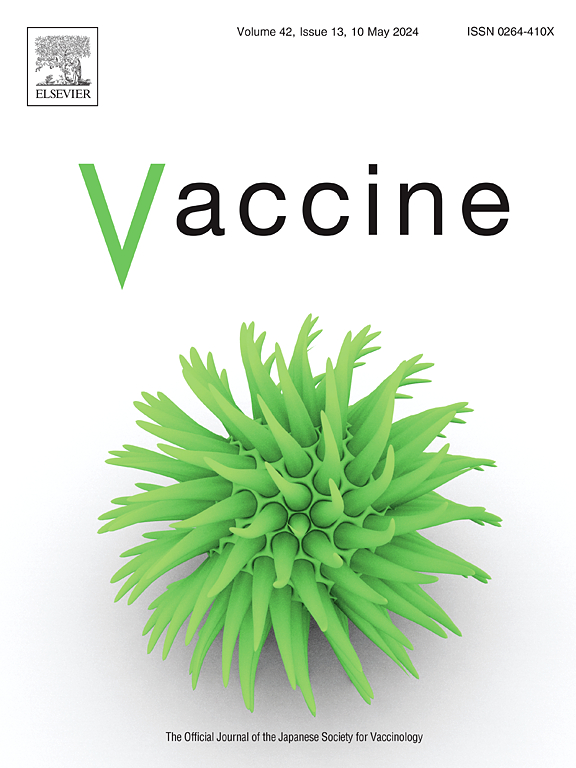将疫苗纳入世界各地疫苗接种计划:范围审查
IF 4.5
3区 医学
Q2 IMMUNOLOGY
引用次数: 0
摘要
在过去50年中,世界卫生组织成员国推动的免疫行动和规划防止了约1.54亿人死亡,其中1.46亿人本应发生在5岁以下儿童中。开发疫苗和实施针对疫苗可预防疾病的全球免疫战略有助于加强全球卫生安全。目的分析世界范围内新疫苗纳入疫苗接种计划的进程。本研究是一项范围审查,根据2024年乔安娜布里格斯研究所证据合成手册进行,并按照系统审查和荟萃分析首选报告项目的指导方针进行报告-范围审查的扩展结果搜索策略产生2432条引用,其中688条因重复而被删除。因此,评估了1744个标题和摘要,结果有75项研究被纳入综述。这些研究中的大多数发现,纳入新疫苗的评估过程主要旨在降低成本和/或促进集体和个人的社会和经济效益,其中大多数侧重于12岁以下儿童的疫苗接种计划。为了评价社会和经济方面,主要的策略是对新疫苗纳入的成本效益和成本效益进行分析。最常使用的工具包括增量成本效益比、残疾调整后的寿命损失年数、质量调整后的寿命年数和马尔可夫模型。最后考虑:已证明纳入疫苗的过程超出了直接的健康影响,包括能够产生长期影响的社会改善和成本优化。本文章由计算机程序翻译,如有差异,请以英文原文为准。
Incorporating vaccines into vaccination schedules around the world: A scoping review
Introduction
Over the past 50 years, immunization initiatives and programs promoted by member countries of the World Health Organization have prevented approximately 154 million deaths, 146 million of which would have occurred among children under 5 years of age. The development of vaccines and implementing global immunization strategies against vaccine-preventable diseases have been instrumental in enhancing global health security.
Objective
To analyze the process of integrating new vaccines into vaccination schedules worldwide.
Methodology
This study is a scoping review, conducted in accordance with the 2024 Joanna Briggs Institute Manual for Evidence Synthesis and reported following the guidelines of the Preferred Reporting Items for Systematic Reviews and Meta-Analyses - Extension for Scoping Reviews
Results
The search strategy yielded 2432 citations, with 688 removed due to duplication. Consequently, 1744 titles and abstracts were assessed, resulting in 75 studies being included in the review. The majority of these studies found that the assessment process for incorporating new vaccines primarily aims at reducing costs and/or promoting collective and individual social and economic benefits, with most focusing on the vaccination schedule for children up to 12 years of age. To evaluate the social and economic aspects, the predominant strategies were cost-effectiveness and cost-benefit analyses of new vaccine incorporation. The most frequently employed tools included the incremental cost-effectiveness ratio, years of life lost adjusted for disability, years of life adjusted for quality, and the Markov model.
Final Considerations
The process of vaccine incorporation has been shown to extend beyond immediate health impacts, encompassing social improvements and cost optimization capable of producing long-term effects.
求助全文
通过发布文献求助,成功后即可免费获取论文全文。
去求助
来源期刊

Vaccine
医学-免疫学
CiteScore
8.70
自引率
5.50%
发文量
992
审稿时长
131 days
期刊介绍:
Vaccine is unique in publishing the highest quality science across all disciplines relevant to the field of vaccinology - all original article submissions across basic and clinical research, vaccine manufacturing, history, public policy, behavioral science and ethics, social sciences, safety, and many other related areas are welcomed. The submission categories as given in the Guide for Authors indicate where we receive the most papers. Papers outside these major areas are also welcome and authors are encouraged to contact us with specific questions.
 求助内容:
求助内容: 应助结果提醒方式:
应助结果提醒方式:


